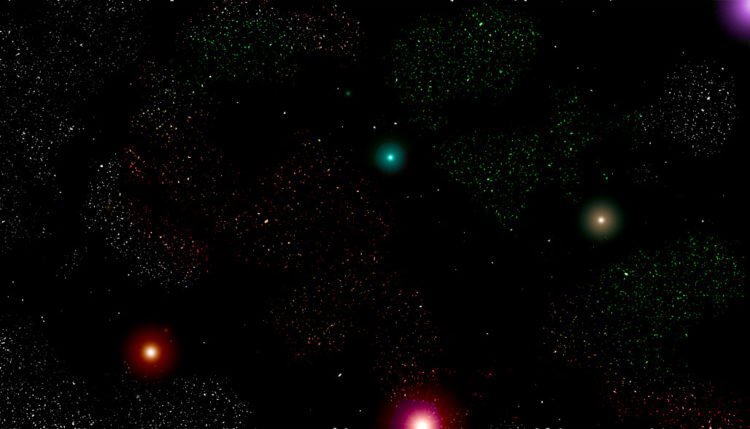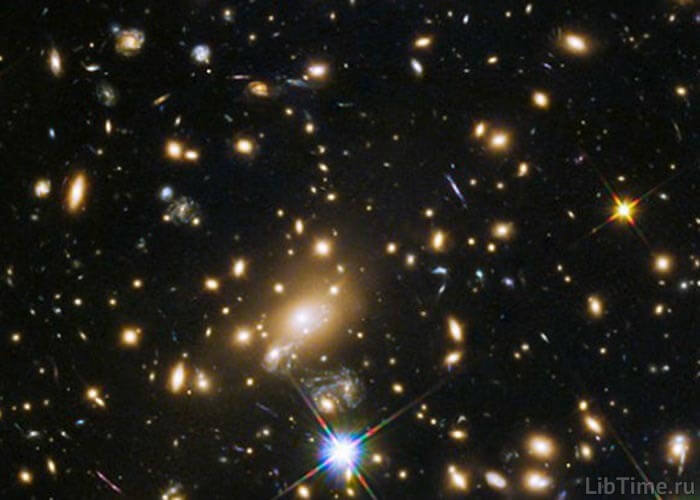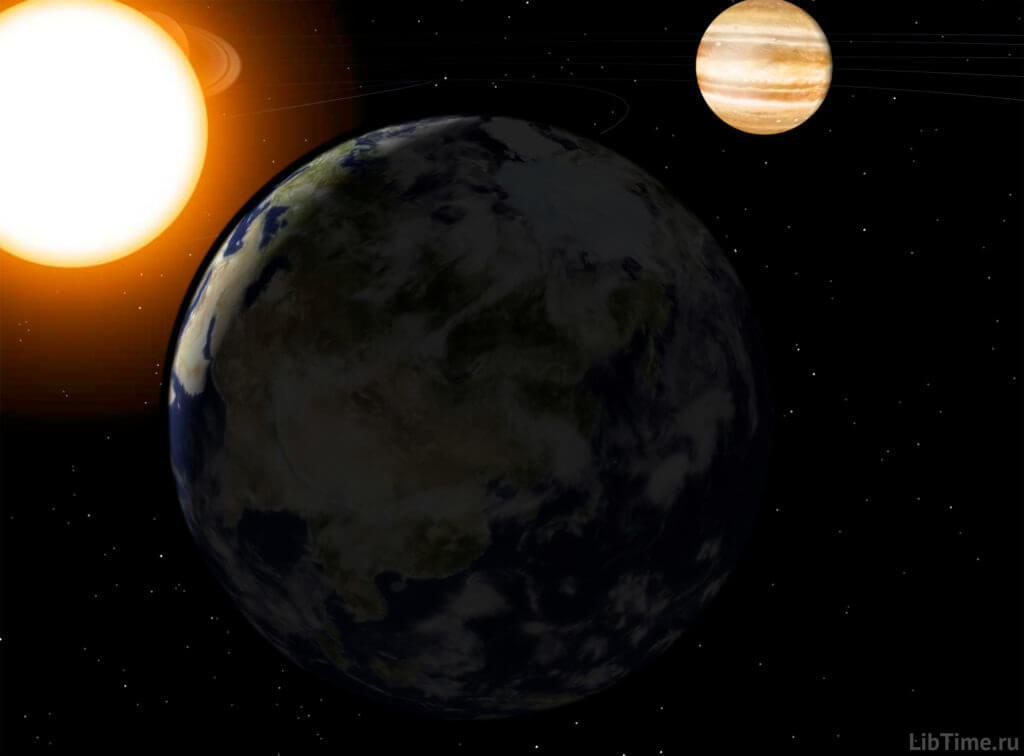The stars and planets of the universe
The stars and planets of the universe are clearly visible on a clear night.
Planets
Among the countless stars can easily be distinguished by the bright shine of the planets, which is translated from the ancient Greek - wandering stars. So named were the ancient Greeks these celestial bodies because day after day they moved relative to the seemingly stationary, the stars and in the night sky seemed bright luminaries.
As you know, the planets are not stars at all: they receive light from the Sun and move around it in orbits that are close to a circle in shape.
Comets
On very elongated orbits in one or another period of time from interplanetary spaces fly distant guests of our solar system - comets, or tail stars (in Greek). The sudden appearance of a comet has always frightened an ignorant person.
It was said that devastating bloody wars would begin, everywhere there would be turmoil, famine, pestilence and even the end of the world. It is much more common to observe, especially in late summer, August flow of stars.
In the olden days it was believed that every man has his own star in the sky, and when he dies, his star fades, falls. Stars, of course, do not fall. They are the debris of celestial bodies and disintegrated comets: they are heated to several thousand degrees and begin to glow when they hit the Earth's atmosphere.
Meteorites
Glow and hot air around falling bodies. In the event that they do not burn up completely, turning into a glowing gas, heavenly stones, as they used to be called, or meteorites, fall to the ground. Sometimes they reach enormous sizes.
The meteorite that fell in February 1947 in the area of the Sikhote-Alin ridge in a rain of fragments is believed to have weighed up to a hundred tons. At the site of its fall found many deep craters up to 30 meters across. For two years in this area was collected about 23 tons of meteorite fragments.
The famous Tunguska meteorite, which fell in the summer of 1908 in the deep taiga, in the area of the small village of Vinovara near the Podkamennaya Tunguska River (Krasnoyarsk Territory), has not yet been found, despite years of searching.
Scientists believe that it exploded during the fall and completely disintegrated into tiny particles of metal dust. It was indeed found when analyzing the soil in the area of the explosion, which was heard for 1000 kilometers.
The explosion column rose to a height of at least 20 kilometers and was visible 750 kilometers in circumference. Over a huge area - up to 60 kilometers across - there were fallen trees with their tops in all directions from the explosion site. Scientists believe that per day on Earth falls about 10 tons of meteoritic material.
Usually among the dimly twinkling stars can be distinguished brighter - bluish-white, yellow, reddish. Most of all stars in a wide silvery band - the Milky Way, which like a giant hoop girdles the sky.
With his discerning eye man penetrated into the hidden depths of the universe and finally saw, finally, in strong telescopes distant worlds like the Milky Way. It is not difficult to conclude from this what a modest place our solar system occupies in the universe - infinite in time and space, having neither beginning nor end.
A star is a glowing, self-luminous ball of light.
On a strict astronomical accounting - millions of stars. Stars and planets of the Universe, that is called, piece by piece counted, recorded in special lists, in the catalog, marked on special maps.
Each star is a glowing self-luminous ball similar to our Sun.
Stars are very far away from us. It would take a very, very long time to reach the nearest star - it is called Proxima, which is Latin for nearest - even with the help of a rocket. The light from this star to Earth takes four years, as astronomers determine.
The speed of light is very high, 300,000 kilometers per second! Hence we can conclude that if, say, Proxima were to go dark today, people would observe its last ray in the sky for four years. One hundred and fifty million kilometers separating the Earth from the Sun, light travels in 8 minutes and 18 seconds.
How close the Sun is to us compared to its nearest neighbor! Stars vary widely in size. A giant star (from the constellation Cepheus) is 2300 times larger than the Sun, and a tiny star (the star Kuipera) is almost half the size of Earth.
The temperature of stars
The temperature of stars also varies. Bluish-white stars are the hottest: their surface temperature is 30,000°; yellow stars are already cooler at 6,000°, and red stars are 3,000° and below. Our Sun is a rather faint star, a yellow dwarf, as astronomers call it.
The birth of stars
By studying the celestial luminaries, scientists have made many interesting conclusions about the birth of stars, their development and chemical composition. The chemical composition of celestial luminaries is studied with a special instrument - a spectroscope. It allows you to detect even tiny amounts of matter by the characteristic colored lines of the spectrum.
Spectrum
Spectrum (from Latin "spectrum") - visible, vision. You can get an idea of the spectrum from a rainbow after a rainstorm. It attracts with elusive transitions from one color to another: from red - through orange, yellow, green, blue and blue - to violet.
You will never forget the places of each color in the spectrum if you remember this little tale:
Every hunter wants to know where the pheasant sits.
Here, the initial letter of the word stands for color. When a ray of light, passing through a three-sided glass prism, falls on a sheet of paper or a white wall, you also get a beautiful rainbow stripe.
The same colored stripe you will see on the ceiling or wall, if the sun's ray falls on the edge of the mirror or the light plays with colored shimmers on faceted balls and pendants theatrical chandelier.
Incandescent solids and liquids, as well as gases under great pressure form continuous spectra in the form of rainbow stripes, while rarefied gases give at incandescence not a continuous but a linear spectrum; it consists of separate colored lines characteristic of each substance, separated by dark gaps.
The adaptation of the spectroscope to the telescope made it possible to obtain photographs of the spectra of very distant celestial luminaries and to conclude that no chemical element unknown on Earth has yet been found on them. The same results were obtained by chemical analysis of meteorites. The spectral analysis of distant star worlds and the chemical analysis of meteorites speak convincingly of the unity of the matter of the Universe.


